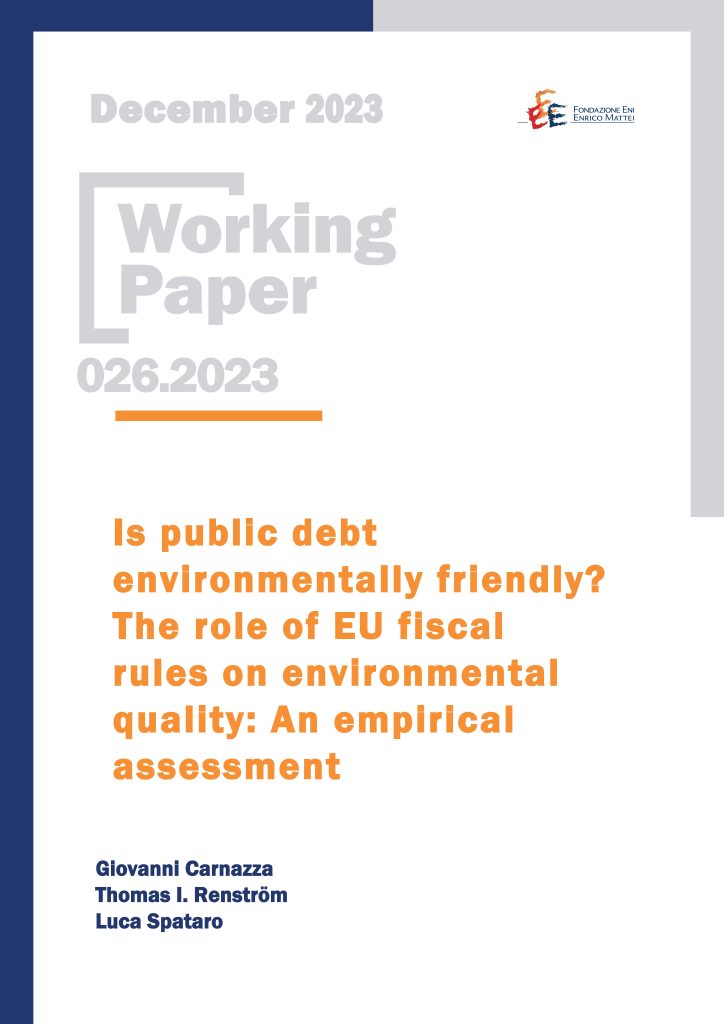Is public debt environmentally friendly? The role of EU fiscal rules on environmental quality: An empirical assessment

24.12.2023
Giovanni Carnazza (Department of Economics and Management, University of Pisa); Thomas I. Renström (Department of Economics and Management, Centre for Environmental and Energy Economics, Durham University); Luca Spataro (Department of Economics and Management, University of Pisa)
H23, H63, H87, Q53, Q58
Fiscal Rules, European Union, Energy taxes, CO2 emissions, Government debt
The EU has embarked on multiple initiatives reflecting its commitment to environmental enhancement and sustainable transitions. Notable among these are the European Green Deal and the NextGenerationEU recovery plan, both pivotal in fostering eco-friendly policies and sustainable practices within the region. Conversely, the fiscal rules within the EU, designed to manage budgetary deficits and debt-to-GDP ratios, may pose challenges to the implementation of fiscal measures targeted at achieving environmental quality objectives. These regulatory constraints potentially curtail the fiscal space available for policies aligned with the environmental goals set forth by the EU. To address this issue, using a panel of 27 European member countries observed annually from 1995 to 2021, we investigate the impact of two different indicators on the overall carbon intensity: on the one hand, the implicit tax rate on energy reduces environmental pollution; on the other hand, an increase in the stringency of the European fiscal framework and/or the debt-to-GDP ratio increase carbon intensity. From a policy point of view, our outcomes stress the importance of shaping national and European regulations to foster more sustainable environmental development.
***
Citazione suggerita: G. Carnazza, T. I. Renström, L. Spataro, ‘Is public debt environmentally friendly? The role of EU fiscal rules on environmental quality: An empirical assessment’, Nota di Lavoro 026.2033, Milano, Italia: Fondazione Eni Enrico Mattei
